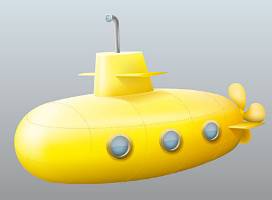Summary
This lesson builds on students' prior knowledge of basic integration techniques in calculus. The purpose of this lesson is to allow students to explore how to "undo" a function's derivative that was found using the chain rule. The chain rule is a derivative technique that allows students to find derivatives of composite functions.
Essential Question(s)
How can we undo the chain rule? In other words, how can we find the antiderivative of a function that has been differentiated using the chain rule?
Snapshot
Engage
Begin by posing the question, "How do we find the derivative of the function f(x)=sqrt(1-x^2)," then following with, "How can we undo this derivative?"
Explore
The exploration allows students a chance to make better sense of and explore how to undo some simple chain rule examples, with the goal of students exploring what works and what does not work.
Explain
Students and the teacher work together to create an Anchor Chart for what worked in the Explore activity and what did not work.
Extend
Students begin to label parts of the functions that didn't work in order to understand how the process of substitution works.
Evaluate
Students use the What? So What? Now What? instructional strategy to reflect on their learning from the lesson.
Materials
Explore activity
Extend problems
Engage
To begin this lesson, display the equation of your choice from the Engage Questions attachment.
Ask students to find the derivative of the equation that you chose using the chain rule. Students can work individually or with a partner.
Explore
In this activity, students will be asked to explore simple integrals in order to determine what "works" and what "doesn't work."
Distribute the Exploring What Works handout to each student. Have students work with a partner to complete the task.
Explain
Creating an Anchor Chart
Using a whiteboard, oversize sticky note, document camera, or interactive whiteboard, create a T-chart by dividing the display into two halves.
Title one half "Worked" and the other half "Didn't Work."
Ask students to categorize the functions into the two categories.
Pose the question, 'Why did these work and those did not?' Using the Think-Pair-Share instructional strategy, give students a few minutes to think to themselves and then discuss with a partner. Finally, solicit a few responses from pairs to write on the anchor chart for the entire class to see.
Extend
Ask students to retrieve their Chain Rule Explanation handout from the Explore activity. Have students work in pairs.
In the blank space at the bottom of the handout, ask students to write out the first problem that "didn't work."
Using the Think-Pair-Share strategy, pose the following question: "Is there part of this equation that looks like it might be the derivative of another part?"
Give students adequate time to think through this question, allow them to speak with their partner after a minute or two, and then solicit responses.
Repeat this process with the remaining three equations that "didn't work."
Evaluate
Have students reflect on what they've done using the What? So What? Now What? strategy.
What? In a few sentences, have students describe what they did today.
So what? Ask students to explain the importance of what they did today.
Now what? Ask student to hypothesize how they will use this information in the future.
Collect responses and share a few with the class at the start of the next day.
Resources
K20 Center. (n.d.). Think-pair-share. Strategies. https://learn.k20center.ou.edu/strategy/d9908066f654727934df7bf4f5064b49
K20 Center. (n.d.). What? So what? Now what? Strategies. https://learn.k20center.ou.edu/strategy/b30762a7557ba0b391f207f4c6002113



